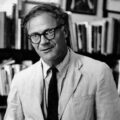Dazzling and Tremendous

Everyone Has a Mouth
by Ernst Herbeck
translated by Gary Sullivan
Softcover, $10.00
Ugly Duckling Presse, 2012
“. . .we must understand [madness] not as reason diseased, or as reason lost or alienated, but quite simply as reason dazzled.” —Michel Foucault
Insanity and poetry are old kin. The number of canonical poets who suffered from mental illness is immense: Blake, Holderlin, Pound, Plath, Lowell, Berryman, Hill, to name just a few. The distinction between insanity and genius is typically judged by the extent of an artist’s transgressions as well as their social class. The blue-blood can afford his or her illness. A struggling mother or teacher is suffocated by it. And although poets may be granted some leniency, they’re hardly alone. Many vocations provide a similar amount of societal absolution, from obsessive-compulsive computer programmers to sociopathic business executives and egomaniacal radio hosts.
This special relationship between mental illness and vocation also reveals a significant dilemma about the nature of insanity. Say, for example, that the expression of some mental illnesses fulfills the needs of a profession especially well, and a large number of people with that illness hold it. This could be the coincidence of industry, society, and psychology: a particular job happens to suit those with a given illness, allowing them a productive place in the world. This assumes an atomized world of isolated forces and a certain amount of good luck. On the other hand, it could be that insanity exists as an expression of socioeconomic forces: that the behaviors and cognitive patterns which are judged to be disordered are, in fact, manifestations of economic and social power structures already in place. In this case, a mind may be ill but its expression of illness is coerced. Further, it could be that the label “mentally ill” is nothing more than a tool of normative control, a term used to categorize, isolate, and mediate societal outliers within the context of their economic use. In this case, a person’s profession and their economic success becomes a key standard by which society judges their relation to sanity.
Behind these possibilities lies an essential uncertainty about whether insanity is material or phenomenological. Is it truly an illness, a mechanical dysfunction that can be approached reductively, measured, and possibly healed? Or is it a complex of cognitive, interpretive, imaginative methods, a way of being in the world that defies societal norms? Perhaps the question is purely ontological, and it should instead be asked, How does society come to know and recognize madness?
A consideration of the role of poets (and other artists) only complicates the matter. If mental illness is phenomenological — if it is first and foremost a social relation — it could be that society has generated a space around poetry where such extreme non-conformity is allowed, and many such persons are drawn (or forced) into it. If so, then the poetry community is just another form of institutionalization, a free-range Bedlam. However, if mental illness is material — if it is a matter of hormones and receptors — it could be that some forms of madness provide the imaginative qualities needed to produce poetry. In this formulation, poetry is the mechanical output of an irregular mind, the excretions of a human poetry machine: language, images, concepts, and social forces enter and then out comes the poem.
Everyone Has a Mouth, Ernst Herbeck’s inaugural publication in English, both sharpens these questions and turns them back on themselves. Herbeck was born in Vienna in 1920 with a cleft palate and lip. He was withdrawn as a young man and, as translator Gary Sullivan writes, led to “solitary creative pursuits,” though never to poetry. This reserve was presumed to be a byproduct of the disfigurement — a physical malformation that, W.G. Sebald writes, “probably played a crucial part . . . in the genesis and particular development of Herbeck’s schizophrenia.”
At the age of twenty, while working in a Nazi munitions factory, Herbeck experienced the overwhelming sense that he was being possessed by animals and other people, and was hospitalized then for the first time. Similar episodes and subsequent hospitalizations recurred over the next five years, but Herbeck was frequently healthy. He was even conscripted into the German army briefly at the end of the war. In 1945, however, Herbeck experienced a major psychological crisis. From that year until his death in 1991, Herbeck spent his days in the care of various mental health institutions, primarily in his native Austria.
Dr. Leo Navratil, a proponent of art brut, or outsider art, began treating Herbeck in 1960. At each session, Navratil would provide a word or an image — such as morning, red, or mouth — and Herbeck would produce a poem in response, on a small piece of scratch paper, such as these lines from “The Mouth”:
Not everyone has a mouth
some mouth is disqualified
or operated on. So it is with me
the doctor says everyone has
a mouth.
With Herbeck’s permission, Navratil published 83 of these poems in his bookSchizophrenia and Language, under the pseudonym “Alexander.” The poems struck a nerve with the Austrian public. Subsequent pseudonymous publications by Herbeck were both popular and critically acclaimed, drawing the attention of art brut theorists Jean Dubuffet and Roger Cardinal, among others. Herbeck’s fame grew over time, and his own books sold tens of thousands of copies; he even appeared on Austrian television.
Unlike poets such as Lowell or Pound who spent significant time in mental hospitals, Herbeck was not a poet who suffered from mental illness. He was not struck by the divine sickness of inspiration, as the ancient Greeks conceived of it. Nor was he a mentally ill person whose own independent artwork was unrecognized until later in life, as with most outsider artists. The more typical relationship between insanity and creativity is reversed: Herbeck was a schizophrenic patient whose institution literally prompted his poetry, for which he is now remembered and acclaimed.
Psychologist Margaret Naumburg, an early American practitioner of art therapy, described the technique as “releasing the unconscious by means of spontaneous art expression.” There are strong echoes of Wordsworth’s definition of poetry, the “spontaneous overflow of powerful feelings.” It’s not a coincidence, exactly. In his landmark volume, Madness and Civilization, Michel Foucault writes that in the eighteenth century, when the medicalization and institutionalization of mental illness first emerges, “passion is no longer simply one of the causes — however powerful — of madness; rather it forms the basis of its very possibility.”
Passion is the common source of both poetry and insanity as each concept was being codified for the modern era. Yet, it is clearly a proxy term, a placeholder like hysteria or melancholy, used to capture social irregularity, nonconformity, what was thought to be a disorder not only of the body but also of the spirit — not unlike sin.
The institutional medicalization of insanity charted in Madness and Civilization is also, or primarily, driven by a distinct moral-theological ethos, one that is in the process of replacing God with reason. It was in this period that the German romantic poet Novalis wrote, “Poetry heals the wounds inflicted by reason.” Foucault cites the physician Sauvages: “these amorous frenzies, these antipathies, these depraved tastes, this melancholy which is caused by grief, these transports wrought in us by denial, these excesses in eating, drinking, these indispositions, these corporeal vices which cause madness, the worst of all madness.” Passion is the shared source of poetry, insanity, and sin, with mental illness and ethics connected in a causal line.
Though the terminology has become more clinical, ethical and social norms continue to inform the diagnosis of mental illness. In 1960, psychologist Thomas Szasz wrote, “In actual contemporary social usage, the finding of a mental illness is made by establishing a deviance in behavior from certain psychosocial, ethical, or legal norms. [. . .] Remedial action, finally, tends to be sought in a therapeutic — or covertly medical — framework, thus creating a situation in which psychosocial, ethical, and/or legal deviations are claimed to be correctible by (so-called) medical action.”
For Herbeck, poetry was the process by which the passions of his disordered soul were objectified into socially acceptable forms, and the patient seems to recognize it himself. “The Mouth” is certainly a poem about Herbeck’s own cleft lip, but it also dramatizes the psychological transference that art therapy intends to produce. He writes that “not everyone has a mouth” — a process of release for the passions, the internalized nonconformity — and that “some mouth is disqualified” — presumably his own — but is reassured by a second voice that, in fact, “everyone has / a mouth.” The poem is a reflection of the medical device intended to cure the patient, a poem about the power structures that prompted it.
Fittingly, the mouth is also a perfect symbol of this trinity of creativity, insanity, and ethics. The organ is full of potential for each, from poetry to incoherence and accusation. Unreason may be recognized most clearly through speech (reason being primarily rhetorical in nature). In the early modern period, disfigurements of the mouth (such as Herbeck’s cleft palate) were thought to be a mark of evil, and corporal punishment to the mouth — as when Jupiter cut out the nymph Lara’s tongue — was one repercussion of Dante’s most dire sin, betrayal. When Milton describes the downfall of the devil and his cadre, he writes, “[Satan] would have spoke / But hiss for hiss returned with forked tongue . . . shame / Cast on themselves from their own mouths.”
Everyone has a Mouth is a slim volume of 30 poems, with an introduction by translator Gary Sullivan and an index of the German originals. The whole thing can be consumed end-to-end in an hour. Each poem is a deeply personal expression of an inscrutable, isolated interior life. They are playful and sonorous. But these unassuming works also shift and reconfigure between each closer inspection. Consider the poem “Red”:
Red is the wine, red are the carnations.
Red is beautiful. Red flowers and red.
Color itself is beautiful.
The red color is red.
Red is the flag, red the poppy.
Red are the lips and the mouth.
Red are the reality and the
Fall. Red are many Blue Leaves.
The poem begins simply, with an almost sweetly innocent tone, then touches upon themes of war in the flag and the poppies, then on his own physical and mental illness, reaching a climax in the final statement of apparent unreason, “Red are many Blue Leaves” (“Rot sind manche Blaue Blatter”). Even the final line may reference Werner Helwig’s 1960 novel Die Blaue Blume des Wandervogels, which chronicles the dissolution of the youth movement (i.e. the boy scouts) by the Nazis. However the ominous echo of the fall of man is Sullivan’s doing — the German word Herbst, which Herbeck uses, translates to Autumn as well as Fall; Sturzwould perhaps carry a more theological resonance.
W.G. Sebald writes that one poem by Herbeck “gives us more to think about than does the professional disposal of the burden of guilt and the past” and that “Herbeck’s poems show us the world in reverse perspective. Everything is contained in a tiny circular image.” Simple, surprising words or phrases at key moments raises a seemingly personal work into a historical reflection. His poem “Language” is one such case:
a + b glow in the clover.
Flowers at the edge of the field.
Language. —
Language is fallen for the animal.
and strikes the a of sound.
the c merely zips around and
___is also briefly its
______rifle.
The arithmetic of language is unsolvable. But Herbeck is perhaps better suited to an examination of this puzzle precisely because language is irrational, symbolic, and self-referential. The a is sound, and possibly b is the will or the intellect, the form or underlying sense, or the image, sound referring back on itself. Regardless, the c — the logical completion of this equation — is the image of a rifle and the zipping sound of bullets. The dark illogic of this conclusion reconstructs the line “Language is fallen for the animal”: what was upon first reading a comic empathy with beasts becomes something else, and Herbeck’s emphasis on the fallen state of language becomes clear, bearing more weight for the recent atrocities committed by German-speaking peoples.
Sebald also describes Herbeck’s obsession with the hare, “a creature that the author related to the question of his own origin.” His child-like enthusiasm for the animal is on full display in “The Hare!!!”
The hare is an audacious animal!
He runs until the trapsall
fasten. The ears point out; he
listens! For it — — — — it’s never time
to rest. Run runs runs
poor hare!
The obvious connection between animal and poet, as Sebald points out, is the cleft form of the mouth. There is a strong sense of empathy for the hare who “Run runs runs”, for whom “it’s never time / to rest”, a harried tone which is imaginatively evoked by the dashes. Perhaps the feeling of pursuit emerges because the hare “listens” — and that sense of hearing may reflect another empathy, of the sounds that pursue, of voices that cannot be escaped. The coinage of “trapsall” — presumably a compound of “traps all” — is a rare misstep by Sullivan. Herbeck uses “Strappen,” the word for strap or garter rendered in the wrong gender case, which also contains echoes of “Strafen,” the German for punish. But “trapsall” seems to be too much of a stretch. It neither conveys the resonances of the German original nor expands the poem’s effect in English.
Decisions about coinages, irregular punctuation, tone and reference are a challenge for any translator, more so when the author is assumed to be not entirely lucid. Sullivan is forced to discern whether a word or phrase is entirely invented — as in Herbeck’s use of “ELLENO” and “Kleyf (R) ‘r.'” in the poem “Blue” — or whether the language has been pushed to the limits of recognition. If it is invented, it raises the question of whether to render it in an Anglicized version that achieves a similar onomatopoetic or conceptual effect, or to leave the text as it appears in German. Though the style of Herbeck’s poems — surreal, illogical, brief — offers a certain amount of cover, Sullivan navigates the difficulties of these texts well. His presence is rarely felt, which is perhaps among the highest praise a translator can receive. There are no moments of overly awkward phrasing or irregular usages that do not seem to reflect the original intent of the composition. Whether they, in fact, do or do not reflect the original is almost beside the point: the translations succeed as poems in English.
Madness, says Foucault, is reason dazzled. The phrase verges on meaninglessness, but it is also fantastically evocative — Theodore Rothke wrote, “Too much reality can be a dazzle, a surfeit; / Too close immediacy an exhaustion.” The unexpected turns of language and the complexities of Herbeck’s poems capture both the dazzlement of unreason and the exasperation of life. Yet, the means of production haunts these poems. Behind each of them is Navratil’s suggestive power, and the entire medical apparatus whose only goal is to treat Herbeck’s illness, which may be the source of his genius. Either that, or the illness is given an outlet through poetry. Are the poems an enclosure? Are they a byproduct? Are they a prescription? Are they revelation?
In “Patient and Poet!” Herbeck writes, “The patient rots in Him! . . . Pig-scoundrel, rot you dog! / and die!!!” Against the contradiction that defines him, the poet whose talent was revealed by the treatment of his illness revolts against himself, the patient who suffers from insanity. Herbeck desires a reversal of the relationship between patient and poet — but it may not be possible. History cannot be dispersed so easily, and the reality of life defies such simple binaries.
But every unraveling of the primary relation between artist, mind, and art is redeemed by the work itself. What is alive and present for the living world is not Herbeck’s mental illness, but the poetry, the poet’s transcendental act of value-making. Art demands to be interpreted within the context of a reader’s personal experience, but it also generates a new context: reading the poems, following the act of speech through the text, one traces the imaginative, conceptual, and ethical existence of another human being. Art transcends the alienation that is inherent in societal power structures, and it transforms those structures at the same time; the art expresses a new set of values that begin to define what it is to be human in the world. Harold Bloom is only exaggerating when he writes, “Shakespeare will go on explaining us, in part because he invented us.”
The history behind Herbeck’s poetry draws out extraordinary questions, whose answers are not forthcoming, and which should not be passed over. Insanity is certainly material, it has a physical degree; but it can not be reduced to a single function. It is also a phenomenon of existence in the world. It is deeply connected to normative thinking, social relations, ethical standards, economic demands. Somehow all of this is contained in the musical, careful lineation of words. So much reality is a surfeit, expansive beyond all reasonable measure. Suddenly, Whitman springs to mind: “Dazzling and tremendous how quick the sun-rise would kill me, If I could not now and always send sun-rise out of me.”
About Daniel Pritchard
Daniel E. Pritchard is the founding editor of The Critical Flame.





